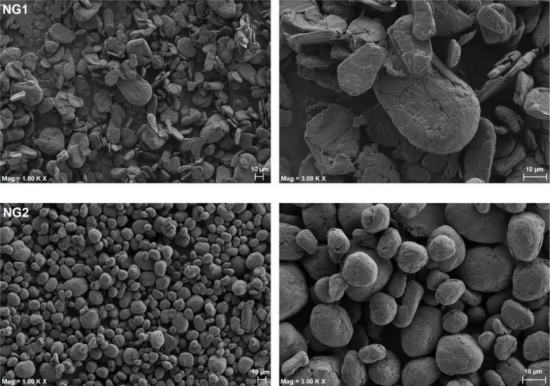【Graphite】What Are the Considerations Behind China's Adjustment of Graphite Export Controls?

【Graphite】What Are the Considerations Behind China's Adjustment of Graphite Export Controls? Here's the Analysis
On October 20, China announced that it would impose export controls on graphite-related items, officially adding high-purity (purity >99.9%), high-strength (flexural strength >30MPa), high-density (density >1.73 g/cm³) artificial graphite materials and products, as well as natural flake graphite and its products (including spherical graphite, expanded graphite, etc.) to the export control list. This will take effect on December 1, 2025.
This announcement comes at a time when the European Union is launching anti-subsidy investigations into Chinese electric vehicles, and the United States is tightening restrictions on China's chip industry. China plays a crucial role in the global graphite industry, which is a key raw material for many strategic emerging industries and an essential component of new energy batteries. As a result, China's decision to implement export controls on graphite has attracted attention from some foreign media, with some analyses suggesting that this is a countermeasure against the U.S. and the EU.

Spherical graphite under an electron microscope. Spherical graphite is an important material for manufacturing lithium battery anodes.
On October 20, Sun Qing, honorary president of the China Carbon Industry Association, gave an interview to Global Times to share his views on the Ministry of Commerce's graphite export control measures.
Global Times: In 2006, the Ministry of Commerce and other national ministries implemented temporary export controls on graphite-related items. On October 20, the Ministry issued an announcement adjusting the temporary export controls, officially adding spherical graphite and other highly sensitive graphite products to the control list while removing five graphite items mainly used in steel, metallurgy, and chemical industries from the temporary control list. What do you think is the purpose of this adjustment?
Sun Qing: As an industry association, we have been in communication with the Ministry of Commerce regarding the adjustment of graphite export controls. I believe the Ministry's adjustment is entirely for the sake of industry development, with no other considerations.
In 2006, when the Ministry first implemented temporary export controls, graphite products, including graphite electrodes for steel production and carbon electrodes for industrial silicon, were included in the list. Domestic companies had to obtain approval from the relevant authorities before they could export. As China is the world's largest producer and exporter of graphite, the need for export licenses caused delays in expanding overseas markets, which in turn affected the development of the industry. We communicated this issue to the Ministry, and after discussions, we agreed that controls related to national security and international non-proliferation obligations are necessary, but other controls could be lifted.
At that time, there was a belief that all processed graphite could be turned into nuclear graphite. However, we now recognize that graphite used for nuclear applications requires extremely high standards, and not all graphite can meet these standards. Therefore, the Ministry's decision to adjust previous measures by formally controlling certain products while removing others from the list is beneficial for industry development and the national economy.
Global Times: We also noticed that high-purity, high-strength, and high-density artificial graphite materials and products remain on the export control list. Why is this?
Sun Qing: Internationally, "three-high" graphite (high purity, strength, and density) is used in military applications, such as the nose cones of ballistic missiles. These materials are needed to withstand high temperatures and high-speed impacts, which metals cannot endure. "Three-high" graphite is the best choice for this purpose. Similarly, aerospace applications also require "three-high" graphite. When rockets are launched, the temperature can soar to thousands of degrees, and the inner lining of the nozzle must be made from "three-high" graphite, as ordinary metals would melt under such extreme temperatures. Therefore, the Ministry's announcement on October 20 clearly stated that, in accordance with international non-proliferation obligations and national security needs, the export controls on "three-high" graphite materials will be retained.
Global Times: In addition to artificial graphite, natural flake graphite and its products (including spherical graphite, expanded graphite, etc.) remain on the export control list. What is the reasoning behind this?
Sun Qing: China has the largest and highest-quality reserves of natural flake graphite in the world, similar to its rare earth resources. We must learn from China's experience with rare earths and avoid excessive, uncontrolled development or exporting unprocessed or minimally processed graphite at low prices. Developed countries like those in Europe and the U.S. rarely develop their own graphite resources for the purpose of protecting their reserves. China's natural flake graphite, formed under special geological conditions over long periods, is precious and non-renewable. Therefore, it is necessary for us to implement export controls to protect this resource, which the Ministry refers to as "protecting national interests."
Global Times: The United States has recently further tightened restrictions on China's chip industry, and on October 20, the Ministry of Commerce announced adjustments to graphite export controls. Some foreign media have linked the widespread use of graphite in new energy batteries to China's dominant position in the global graphite market. They believe these actions are indirectly or directly related to the technological competition between China and the U.S. What is your view?
Sun Qing: The Ministry of Commerce has clearly stated that China's export control adjustments are normal and not aimed at any specific country or region. Exports for national economic purposes that comply with relevant regulations will still be approved. Therefore, the foreign media's associations are without factual basis.
Global Times: China's temporary export control measures on graphite-related items have been in place since 2006. On October 20, the Ministry made adjustments by adding three highly sensitive types of graphite to the formal control list. What is the difference between temporary and formal export controls?
Sun Qing: Early on, China's export controls were mostly termed temporary because the export control list had to be adjusted annually, usually in December. The reason the new control measures are set to be implemented on December 1, 2023, is because it aligns with the usual schedule for adjustments. Formal control lists are regularly updated as well, but whether temporary or formal, the need for export approval remains the same in practice.
Feel free to contact us anytime for more information about the graphite market. Our team is dedicated to providing you with in-depth insights and customized assistance based on your needs. Whether you have questions about product specifications, market trends, or pricing, we are here to help.
No related results found








0 Replies